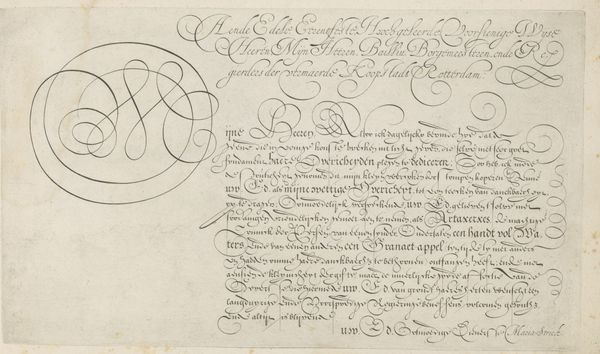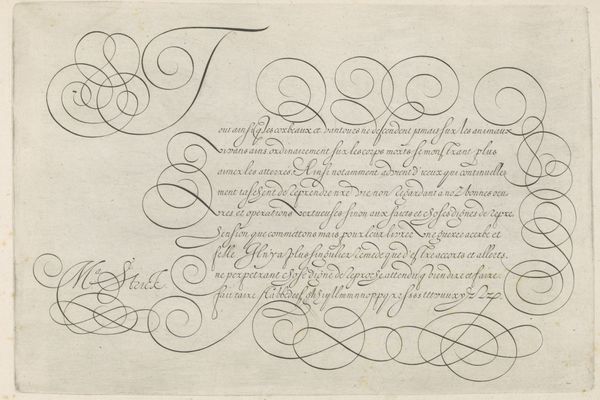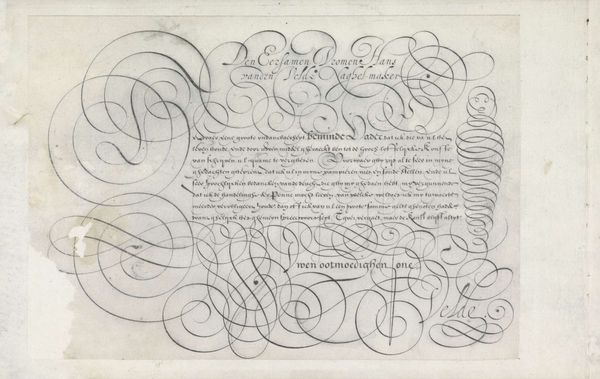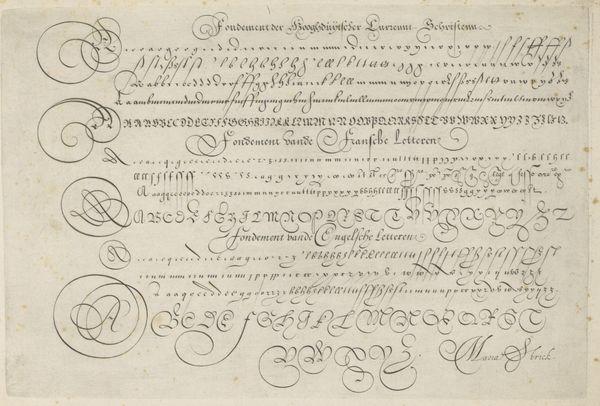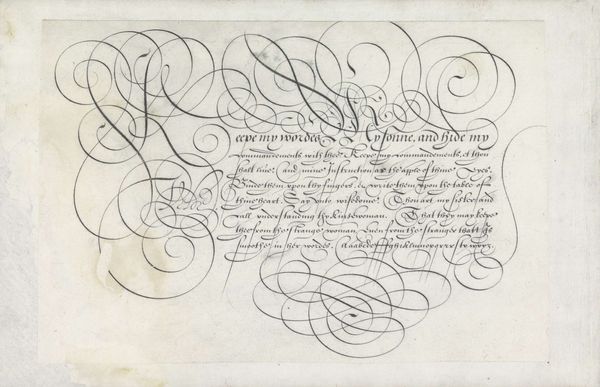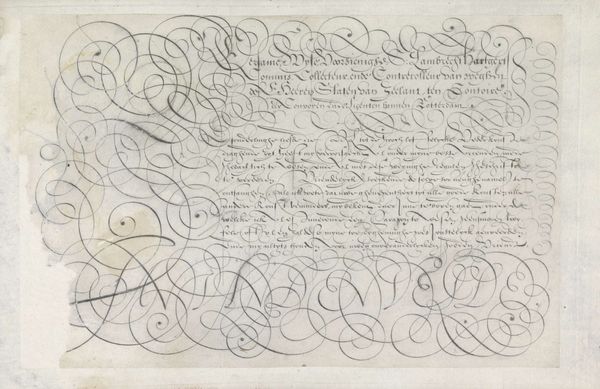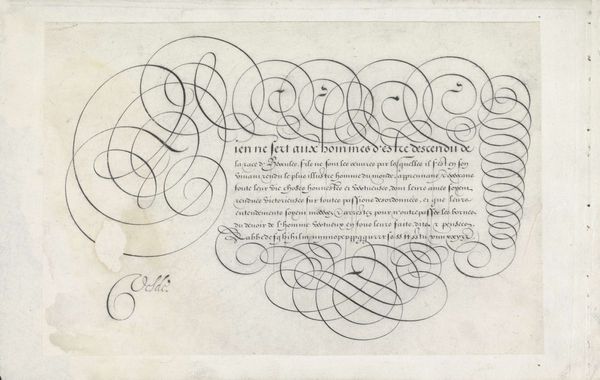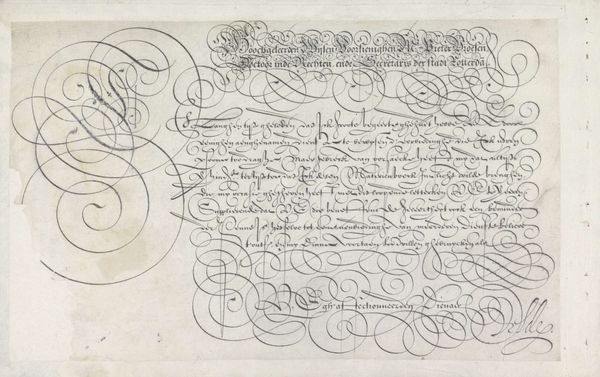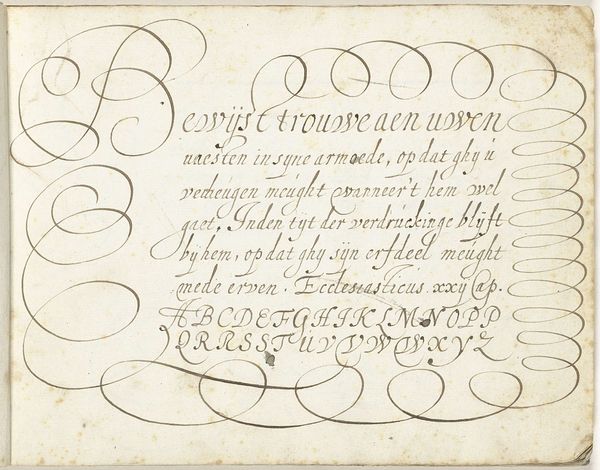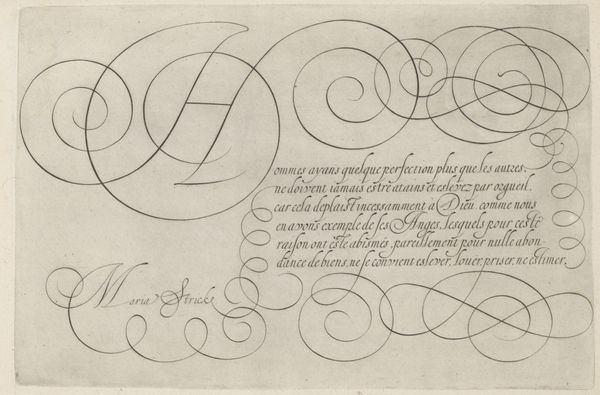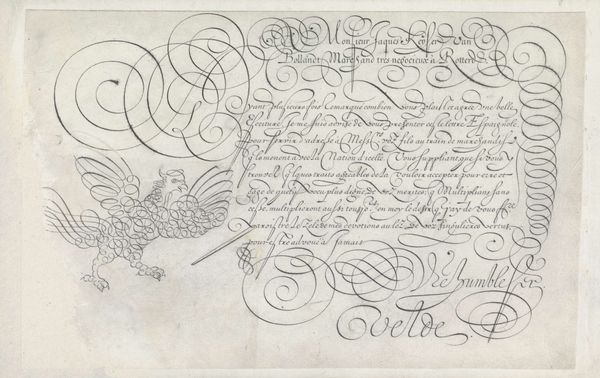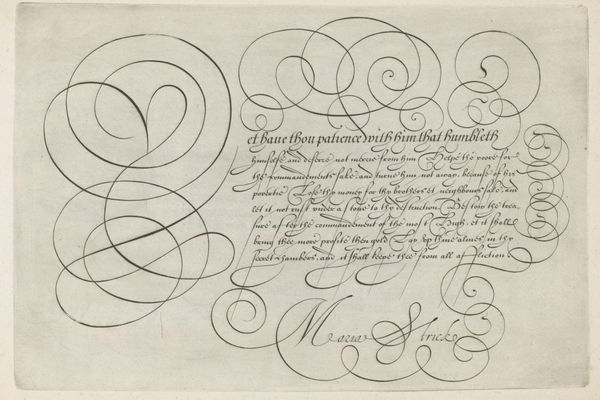
drawing, textile, ink, pen
#
drawing
#
baroque
#
textile
#
figuration
#
ink
#
hand-drawn typeface
#
pen work
#
pen
#
calligraphy
Dimensions: height 199 mm, width 299 mm
Copyright: Rijks Museum: Open Domain
Curator: This calligraphic drawing, “Schrijfvoorbeeld met kapitaal W” by Hans Strick from 1618, it’s really quite stunning. The sweeping lines, created with pen and ink on textile, exemplify Baroque artistry. What grabs your attention most about this work? Editor: Well, the sheer density of the ink! It's almost overwhelming, and yet there's such precision. It really emphasizes the labor involved in creating such a detailed piece, almost devotional, or advertising skill to prospective patrons. Is there any significance to this use of text and its almost overwhelming presentation? Curator: Precisely. Look at the material conditions that enable such production. Fine pen, high-quality ink, the vellum support - these were valuable commodities. Also consider the context: calligraphy was both art and a trade. Someone, somewhere, had to make all of those material conditions possible. By training, apprenticeships, the consumption of food and materials. Strick showcases not only skill, but also, you're right, is involved in selling a valuable skill in the 17th century market for artisanal production, almost advertising for their specific brand. Can you discern any message about art in the choice of those tools of drawing? Editor: I never thought about the textile element like that; you have opened my mind up to reading drawings as also reflecting systems of production, rather than just art historical content. Curator: Indeed. Think of the social dynamics embedded within the materials themselves, not just the final image. It forces us to see beyond the aesthetic and consider the hands, the economies, and the power structures at play. Editor: This definitely provides an unusual lens through which to understand not just the object, but its social value too. I appreciate that new direction of inquiry! Curator: It's rewarding to peel back those layers, isn't it?
Comments
No comments
Be the first to comment and join the conversation on the ultimate creative platform.
